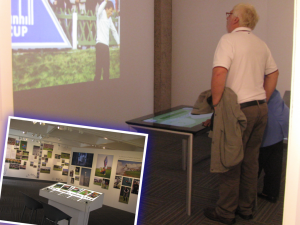SACHI seminar
Title: A neurodynamical model of luminance perception
Speaker: Olivier Penacchio, University of St Andrews
Abstract:
The perception of such simple visual features as black, greys and white may sound simple. However, the luminance we perceive, also called brightness, does not match the luminance as physically measured. Instead, the perceived intensity of an area is modulated by the luminance of surrounding areas. This phenomenon is known as brightness induction and provides a striking demonstration that visual perception cannot be considered a simple pixel-wise sampling of the environment.
The talk will start with an overview of the classical examples of brightness induction and a quick look at the different theories underlying this phenomenon. We will next introduce a neurodynamical model of brightness induction, recently published*. This model is based on the architecture of the primary visual cortex and successfully accounts for well-known psychophysical effects both in static and dynamic contexts. It suggests that a common simple mechanism may underlie different fundamental processes of visual perception such as saliency and brightness perception. Finally, we will briefly outline potential applications in the arena of computer vision and medical imaging.
* Penacchio O, Otazu X, Dempere-Marco L (2013) A Neurodynamical Model of Brightness Induction in V1. PLoS ONE 8(5): e64086. doi:10.1371/journal.pone.0064086
Event details
- When: 11th June 2013 13:00 - 14:00
- Where: Cole 1.33a
- Format: Seminar


